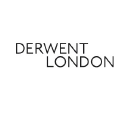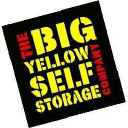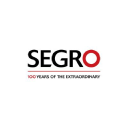UTG.L

Unite Group Plc
UTG.L
(2.8)855,00 GBp
11.75% ROA
6.45% ROE
14.78x PER
4.440.565.408,00 GBp
38.61% DER
3.96% Yield
79.68% NPM
Unite Group Plc Stock Analysis
Unite Group Plc Fundamental Analysis
Fundamental analysis in stock investing is like studying the foundation of a house before buying it. It involves looking at a company's financial health, like its earnings, assets, and debts, to determine if it's a good investment based on its fundamental strength and potential for growth.
| # | Analysis | Rating |
|---|---|---|
| 1 |
DER
The stock has a low debt to equity ratio (36%), which means it has a small amount of debt compared to the ownership it holds |
|
| 2 |
Dividend
The company's consistent dividend distribution over the past five years reflects its dedication to providing shareholders with steady returns, making it an appealing choice for investors seeking income stability. |
|
| 3 |
ROE
ROE in an average range (9.7%) suggests satisfactory profitability and decent utilization of shareholders' equity. |
|
| 4 |
ROA
The stock's ROA (6.6%) shows that it's doing a pretty good job at making money from its assets, making it a solid choice to invest and earn steady profits. |
|
| 5 |
PBV
The stock's PBV ratio (1.04x) indicates a justifiable valuation, presenting a compelling choice for investors seeking reasonable returns. |
|
| 6 |
Revenue Growth
Over the past three years, this company's revenue has consistently grown, demonstrating a positive financial trend that makes it an appealing choice. |
|
| 7 |
Net Profit Growth
Over the last three years, this company has consistently achieved net profit growth, indicating a favorable financial performance and making it an attractive investment option. |
|
| 8 |
Assets Growth
With a track record of continuous revenue growth in the last three years, this company offers a promising investment opportunity |
|
| 9 |
Dividend Growth
With a history of consistent dividend increases over the last three years, the company has proven to be a reliable choice for investors seeking reliable income. |
|
| 10 |
Graham Number
The company's Graham number indicates that it is overvalued compared to its stock price, suggesting a potentially unfavorable investment opportunity. |
|
| 11 |
Buffet Intrinsic Value
The company's stock appears overvalued (1) by Warren Buffett's formula, suggesting a less favorable investment opportunity as its market price exceeds its estimated intrinsic value. |
Unite Group Plc Technical Analysis
Technical analysis in stock investing is like reading the patterns on a weather map to predict future weather conditions. It involves studying past stock price movements and trading volumes to make predictions about where a stock's price might go next, without necessarily looking at the company's financial health.
| # | Analysis | Recommendation |
|---|---|---|
| 1 | Awesome Oscillator | Hold |
| 2 | MACD | Buy |
| 3 | RSI | Hold |
| 4 | Stoch RSI | Hold |
Unite Group Plc Price Chart
Financial Statements
Financial statements are like report cards for companies. They show how much money a company makes (income statement), what it owns and owes (balance sheet), and where it spends its money (cash flow statement), helping stock investors understand if a company is healthy and worth investing in.
Income Statements
An income statement for a company is like a scoreboard for its profits and losses. It shows how much money the company made (revenue) and how much it spent to make that money (expenses), helping stock investors see if a company is making a profit or not.
Revenue in stock investing is the total amount of money a company earns from its sales, and it's a key factor that investors consider to assess a company's financial performance and growth potential.
| Year | Revenue | Growth |
|---|---|---|
| 1996 | 485.000 | |
| 1997 | 1.746.000 | 72.22% |
| 1998 | 5.505.000 | 68.28% |
| 1999 | 11.057.000 | 50.21% |
| 2000 | 29.952.000 | 63.08% |
| 2001 | 24.499.000 | -22.26% |
| 2002 | 32.873.000 | 25.47% |
| 2003 | 48.055.000 | 31.59% |
| 2004 | 74.623.000 | 35.6% |
| 2005 | 113.799.000 | 34.43% |
| 2006 | 110.636.000 | -2.86% |
| 2007 | 72.140.000 | -53.36% |
| 2008 | 133.594.000 | 46% |
| 2009 | 265.400.000 | 49.66% |
| 2010 | 193.400.000 | -37.23% |
| 2011 | 94.900.000 | -103.79% |
| 2012 | 214.600.000 | 55.78% |
| 2013 | 97.300.000 | -120.55% |
| 2014 | 129.900.000 | 25.1% |
| 2015 | 237.600.000 | 45.33% |
| 2016 | 156.700.000 | -51.63% |
| 2017 | 156.900.000 | 0.13% |
| 2018 | 169.500.000 | 7.43% |
| 2019 | 156.200.000 | -8.51% |
| 2019 | 156.200.000 | 0% |
| 2020 | 215.600.000 | 27.55% |
| 2021 | 266.899.999 | 19.22% |
| 2022 | 259.300.000 | -2.93% |
| 2023 | 276.100.000 | 6.08% |
| 2024 | 838.400.000 | 67.07% |
Research and Development Expenses are the costs a company incurs to create and improve its products or services, which can be important for investors to evaluate a company's innovation and potential for future growth.
| Year | Research and Development Expenses | Growth |
|---|---|---|
| 1996 | 0 | |
| 1997 | 0 | 0% |
| 1998 | 0 | 0% |
| 1999 | 0 | 0% |
| 2000 | 0 | 0% |
| 2001 | 0 | 0% |
| 2002 | 0 | 0% |
| 2003 | 0 | 0% |
| 2004 | 0 | 0% |
| 2005 | 0 | 0% |
| 2006 | 0 | 0% |
| 2007 | 0 | 0% |
| 2008 | 0 | 0% |
| 2009 | 0 | 0% |
| 2010 | 0 | 0% |
| 2011 | 0 | 0% |
| 2012 | 0 | 0% |
| 2013 | 0 | 0% |
| 2014 | 0 | 0% |
| 2015 | 0 | 0% |
| 2016 | 1 | 0% |
| 2017 | 1 | 100% |
| 2018 | 1 | 0% |
| 2019 | 0 | 0% |
| 2019 | -1 | 100% |
| 2020 | -1 | 0% |
| 2021 | 1 | 0% |
| 2022 | 1 | 100% |
| 2023 | 0 | 0% |
| 2024 | 0 | 0% |
General and Administrative Expenses are the costs a company incurs to run its day-to-day operations, such as office rent, salaries, and utilities, which investors consider to understand a company's overall efficiency and management effectiveness.
| Year | General and Administrative Expenses | Growth |
|---|---|---|
| 1996 | 0 | |
| 1997 | 0 | 0% |
| 1998 | 0 | 0% |
| 1999 | 0 | 0% |
| 2000 | 0 | 0% |
| 2001 | 0 | 0% |
| 2002 | 16.583.000 | 100% |
| 2003 | 15.110.000 | -9.75% |
| 2004 | 14.284.000 | -5.78% |
| 2005 | 15.671.000 | 8.85% |
| 2006 | 19.751.000 | 20.66% |
| 2007 | 21.082.000 | 6.31% |
| 2008 | 26.306.000 | 19.86% |
| 2009 | 0 | 0% |
| 2010 | 0 | 0% |
| 2011 | 0 | 0% |
| 2012 | 0 | 0% |
| 2013 | 0 | 0% |
| 2014 | 0 | 0% |
| 2015 | 0 | 0% |
| 2016 | 0 | 0% |
| 2017 | 0 | 0% |
| 2018 | 0 | 0% |
| 2019 | 0 | 0% |
| 2019 | 0 | 0% |
| 2020 | 0 | 0% |
| 2021 | 0 | 0% |
| 2022 | 0 | 0% |
| 2023 | 0 | 0% |
| 2024 | 0 | 0% |
EBITDA stands for Earnings Before Interest, Taxes, Depreciation, and Amortization. It is a measure that helps stock investors analyze a company's profitability by looking at its earnings without considering certain expenses. This helps to get a clearer picture of the company's financial performance and its ability to generate cash flow.
| Year | EBITDA | Growth |
|---|---|---|
| 1996 | 218.000 | |
| 1997 | 1.682.000 | 87.04% |
| 1998 | 1.974.000 | 14.79% |
| 1999 | 2.690.000 | 26.62% |
| 2000 | 6.565.000 | 59.03% |
| 2001 | 5.000.000 | -31.3% |
| 2002 | 14.435.000 | 65.36% |
| 2003 | 23.302.000 | 38.05% |
| 2004 | 60.051.000 | 61.2% |
| 2005 | 76.612.000 | 21.62% |
| 2006 | 114.990.000 | 33.38% |
| 2007 | 31.714.000 | -262.58% |
| 2008 | -56.903.000 | 155.73% |
| 2009 | -8.800.000 | -546.63% |
| 2010 | 59.900.000 | 114.69% |
| 2011 | 31.800.000 | -88.36% |
| 2012 | 152.700.000 | 79.17% |
| 2013 | 34.300.000 | -345.19% |
| 2014 | 56.500.000 | 39.29% |
| 2015 | 96.800.000 | 41.63% |
| 2016 | 91.200.000 | -6.14% |
| 2017 | 95.900.000 | 4.9% |
| 2018 | 113.000.000 | 15.13% |
| 2019 | -62.200.000 | 281.67% |
| 2019 | 102.800.000 | 160.51% |
| 2020 | 128.600.000 | 20.06% |
| 2021 | 182.100.000 | 29.38% |
| 2022 | 235.600.000 | 22.71% |
| 2023 | 143.800.000 | -63.84% |
| 2024 | 618.000.000 | 76.73% |
Gross profit is the money a company makes from selling its products or services after subtracting the cost of producing or providing them, and it is an important measure for investors to understand a company's profitability.
| Year | Gross Profit | Growth |
|---|---|---|
| 1996 | 485.000 | |
| 1997 | 1.746.000 | 72.22% |
| 1998 | 2.540.000 | 31.26% |
| 1999 | 3.151.000 | 19.39% |
| 2000 | 8.593.000 | 63.33% |
| 2001 | 15.954.000 | 46.14% |
| 2002 | 24.485.000 | 34.84% |
| 2003 | 35.207.000 | 30.45% |
| 2004 | 49.945.000 | 29.51% |
| 2005 | 58.935.000 | 15.25% |
| 2006 | 60.747.000 | 2.98% |
| 2007 | 42.166.000 | -44.07% |
| 2008 | 11.829.000 | -256.46% |
| 2009 | 18.400.000 | 35.71% |
| 2010 | 46.400.000 | 60.34% |
| 2011 | 32.200.000 | -44.1% |
| 2012 | 69.400.000 | 53.6% |
| 2013 | 55.500.000 | -25.05% |
| 2014 | 79.900.000 | 30.54% |
| 2015 | 122.700.000 | 34.88% |
| 2016 | 111.800.000 | -9.75% |
| 2017 | 115.800.000 | 3.45% |
| 2018 | 129.300.000 | 10.44% |
| 2019 | 123.200.000 | -4.95% |
| 2019 | 115.600.000 | -6.57% |
| 2020 | 153.000.000 | 24.44% |
| 2021 | 194.699.999 | 21.42% |
| 2022 | 181.200.000 | -7.45% |
| 2023 | 193.000.000 | 6.11% |
| 2024 | 673.200.000 | 71.33% |
Net income in stock investing is like the money a company actually gets to keep as profit after paying all its bills, and it's an important measure to understand how well a company is doing financially.
| Year | Net Profit | Growth |
|---|---|---|
| 1996 | 65.000 | |
| 1997 | 548.000 | 88.14% |
| 1998 | 589.000 | 6.96% |
| 1999 | 849.000 | 30.62% |
| 2000 | 3.026.000 | 71.94% |
| 2001 | -2.040.000 | 248.33% |
| 2002 | -25.635.000 | 92.04% |
| 2003 | -10.788.000 | -137.63% |
| 2004 | 17.340.000 | 162.21% |
| 2005 | 32.310.000 | 46.33% |
| 2006 | 71.483.000 | 54.8% |
| 2007 | -37.475.000 | 290.75% |
| 2008 | -115.942.000 | 67.68% |
| 2009 | -34.900.000 | -232.21% |
| 2010 | 19.600.000 | 278.06% |
| 2011 | 2.100.000 | -833.33% |
| 2012 | 125.600.000 | 98.33% |
| 2013 | 78.000.000 | -61.03% |
| 2014 | 102.600.000 | 23.98% |
| 2015 | 351.900.000 | 70.84% |
| 2016 | 224.000.000 | -57.1% |
| 2017 | 221.600.000 | -1.08% |
| 2018 | 235.700.000 | 5.98% |
| 2019 | -87.600.000 | 369.06% |
| 2019 | -89.200.000 | 1.79% |
| 2020 | -121.000.000 | 26.28% |
| 2021 | 342.400.000 | 135.34% |
| 2022 | 350.500.000 | 2.31% |
| 2023 | 102.500.000 | -241.95% |
| 2024 | 1.126.800.000 | 90.9% |
EPS, or earnings per share, is a measure that shows how much profit a company has earned for each outstanding share of its stock, and it is important for stock investors as it helps understand the profitability of a company and compare it with other companies in the market.
| Year | Earning per Share (EPS) | Growth |
|---|---|---|
| 1996 | 0 | |
| 1997 | 0 | 0% |
| 1998 | 0 | 0% |
| 1999 | 0 | 0% |
| 2000 | 0 | 0% |
| 2001 | 0 | 0% |
| 2002 | 0 | 0% |
| 2003 | 0 | 0% |
| 2004 | 0 | 0% |
| 2005 | 0 | 0% |
| 2006 | 1 | 0% |
| 2007 | 0 | 0% |
| 2008 | 0 | 0% |
| 2009 | 0 | 0% |
| 2010 | 0 | 0% |
| 2011 | 0 | 0% |
| 2012 | 1 | 0% |
| 2013 | 0 | 0% |
| 2014 | 1 | 0% |
| 2015 | 2 | 100% |
| 2016 | 1 | 0% |
| 2017 | 1 | 0% |
| 2018 | 1 | 0% |
| 2019 | 0 | 0% |
| 2019 | 0 | 0% |
| 2020 | 0 | 0% |
| 2021 | 1 | 0% |
| 2022 | 1 | 0% |
| 2023 | 0 | 0% |
| 2024 | 3 | 100% |
Cashflow Statements
Cashflow statements show the movement of money in and out of a company, helping stock investors understand how much money a company makes and spends. By examining cashflow statements, investors can assess if a company is generating enough cash to pay its bills, invest in growth, and provide returns to stockholders.
Free cash flow is the leftover cash that a company generates after covering its operating expenses and capital expenditures, which is important for stock investors as it shows how much money a company has available to invest in growth, pay dividends, or reduce debt.
| Year | Free Cashflow | Growth |
|---|---|---|
| 1996 | -3.761.000 | |
| 1997 | -18.126.000 | 79.25% |
| 1998 | -13.420.000 | -35.07% |
| 1999 | -26.234.000 | 48.85% |
| 2000 | -73.182.000 | 64.15% |
| 2001 | -104.384.000 | 29.89% |
| 2002 | -220.614.000 | 52.68% |
| 2003 | -189.961.000 | -16.14% |
| 2004 | -200.322.000 | 5.17% |
| 2005 | -138.135.000 | -45.02% |
| 2006 | -609.000 | -22582.27% |
| 2007 | -161.804.000 | 99.62% |
| 2008 | -174.412.000 | 7.23% |
| 2009 | 33.600.000 | 619.08% |
| 2010 | 25.600.000 | -31.25% |
| 2011 | -94.000.000 | 127.23% |
| 2012 | 6.200.000 | 1616.13% |
| 2013 | 2.900.000 | -113.79% |
| 2014 | 39.400.000 | 92.64% |
| 2015 | 116.400.001 | 66.15% |
| 2016 | 65.000.000 | -79.08% |
| 2017 | 51.900.000 | -25.24% |
| 2018 | 58.400.000 | 11.13% |
| 2019 | 93.475.000 | 37.52% |
| 2019 | 75.200.000 | -24.3% |
| 2020 | 26.000.000 | -189.23% |
| 2021 | 156.900.000 | 83.43% |
| 2022 | 145.600.000 | -7.76% |
| 2023 | 140.300.000 | -3.78% |
| 2024 | 146.600.000 | 4.3% |
Operating cash flow represents the cash generated or consumed by a company's day-to-day operations, excluding external investing or financing activities, and is crucial for stock investors as it shows how much cash a company is generating from its core business operations.
| Year | Operating Cashflow | Growth |
|---|---|---|
| 1996 | -72.000 | |
| 1997 | -1.090.000 | 93.39% |
| 1998 | -1.172.000 | 7% |
| 1999 | 3.479.000 | 133.69% |
| 2000 | -2.806.000 | 223.98% |
| 2001 | -18.296.000 | 84.66% |
| 2002 | -24.467.000 | 25.22% |
| 2003 | -11.238.000 | -117.72% |
| 2004 | -24.627.000 | 54.37% |
| 2005 | -26.436.000 | 6.84% |
| 2006 | 4.052.000 | 752.42% |
| 2007 | -156.825.000 | 102.58% |
| 2008 | -172.464.000 | 9.07% |
| 2009 | 59.400.000 | 390.34% |
| 2010 | 33.300.000 | -78.38% |
| 2011 | -73.600.000 | 145.24% |
| 2012 | 57.500.000 | 228% |
| 2013 | 5.200.000 | -1005.77% |
| 2014 | 44.200.000 | 88.24% |
| 2015 | 120.500.000 | 63.32% |
| 2016 | 68.100.000 | -76.95% |
| 2017 | 56.300.000 | -20.96% |
| 2018 | 59.700.000 | 5.7% |
| 2019 | 19.625.000 | -204.2% |
| 2019 | 80.200.000 | 75.53% |
| 2020 | 29.400.000 | -172.79% |
| 2021 | 160.500.000 | 81.68% |
| 2022 | 155.300.000 | -3.35% |
| 2023 | 143.000.000 | -8.6% |
| 2024 | 147.100.000 | 2.79% |
Capex, short for capital expenditures, refers to the money a company spends on acquiring or upgrading tangible assets like buildings, equipment, or technology, which is important for stock investors as it indicates how much a company is investing in its infrastructure to support future growth and profitability.
| Year | Capital Expenditure | Growth |
|---|---|---|
| 1996 | 3.689.000 | |
| 1997 | 17.036.000 | 78.35% |
| 1998 | 12.248.000 | -39.09% |
| 1999 | 29.713.000 | 58.78% |
| 2000 | 70.376.000 | 57.78% |
| 2001 | 86.088.000 | 18.25% |
| 2002 | 196.147.000 | 56.11% |
| 2003 | 178.723.000 | -9.75% |
| 2004 | 175.695.000 | -1.72% |
| 2005 | 111.699.000 | -57.29% |
| 2006 | 4.661.000 | -2296.46% |
| 2007 | 4.979.000 | 6.39% |
| 2008 | 1.948.000 | -155.6% |
| 2009 | 25.800.000 | 92.45% |
| 2010 | 7.700.000 | -235.06% |
| 2011 | 20.400.000 | 62.25% |
| 2012 | 51.300.000 | 60.23% |
| 2013 | 2.300.000 | -2130.43% |
| 2014 | 4.800.000 | 52.08% |
| 2015 | 4.099.999 | -17.07% |
| 2016 | 3.100.000 | -32.26% |
| 2017 | 4.400.000 | 29.55% |
| 2018 | 1.300.000 | -238.46% |
| 2019 | -73.850.000 | 101.76% |
| 2019 | 5.000.000 | 1577% |
| 2020 | 3.400.000 | -47.06% |
| 2021 | 3.600.000 | 5.56% |
| 2022 | 9.700.000 | 62.89% |
| 2023 | 2.700.000 | -259.26% |
| 2024 | 500.000 | -440% |
Balance Sheet
Balance sheets provide a snapshot of a company's financial health and its assets (such as cash, inventory, and property) and liabilities (like debts and obligations) at a specific point in time. For stock investors, balance sheets help assess the company's overall worth and evaluate its ability to meet financial obligations and support future growth.
Equity refers to the ownership interest or stake that shareholders have in a company, representing their claim on its assets and earnings after all debts and liabilities are paid.
| Year | Equity | Growth |
|---|---|---|
| 1996 | 1.623.000 | |
| 1997 | 6.014.000 | 73.01% |
| 1998 | 10.267.000 | 41.42% |
| 1999 | 26.332.000 | 61.01% |
| 2000 | 88.656.000 | 70.3% |
| 2001 | 202.058.000 | 56.12% |
| 2002 | 308.118.000 | 34.42% |
| 2003 | 326.792.000 | 5.71% |
| 2004 | 321.809.000 | -1.55% |
| 2005 | 382.698.000 | 15.91% |
| 2006 | 481.187.000 | 20.47% |
| 2007 | 450.093.000 | -6.91% |
| 2008 | 335.366.000 | -34.21% |
| 2009 | 381.000.000 | 11.98% |
| 2010 | 403.700.000 | 5.62% |
| 2011 | 404.700.000 | 0.25% |
| 2012 | 533.700.000 | 24.17% |
| 2013 | 672.000.000 | 20.58% |
| 2014 | 862.300.000 | 22.07% |
| 2015 | 1.297.700.000 | 33.55% |
| 2016 | 1.475.500.000 | 12.05% |
| 2017 | 1.754.200.000 | 15.89% |
| 2018 | 2.098.800.000 | 16.42% |
| 2019 | 3.098.000.000 | 32.25% |
| 2020 | 3.260.000.000 | 4.97% |
| 2021 | 3.554.400.000 | 8.28% |
| 2022 | 3.818.500.000 | 6.92% |
| 2023 | 4.093.100.000 | 6.71% |
| 2023 | 3.868.700.000 | -5.8% |
| 2024 | 4.295.800.000 | 9.94% |
Assets represent the valuable resources that a company owns, such as cash, inventory, property, and equipment, and understanding a company's assets helps investors assess its value and potential for generating future profits.
| Year | Assets | Growth |
|---|---|---|
| 1996 | 6.700.000 | |
| 1997 | 28.166.000 | 76.21% |
| 1998 | 46.363.000 | 39.25% |
| 1999 | 89.270.000 | 48.06% |
| 2000 | 190.660.000 | 53.18% |
| 2001 | 449.367.000 | 57.57% |
| 2002 | 772.336.000 | 41.82% |
| 2003 | 1.021.479.000 | 24.39% |
| 2004 | 1.216.041.000 | 16% |
| 2005 | 1.270.724.000 | 4.3% |
| 2006 | 1.068.341.000 | -18.94% |
| 2007 | 1.184.721.000 | 9.82% |
| 2008 | 1.104.926.000 | -7.22% |
| 2009 | 921.900.000 | -19.85% |
| 2010 | 852.400.000 | -8.15% |
| 2011 | 990.200.000 | 13.92% |
| 2012 | 1.168.500.000 | 15.26% |
| 2013 | 1.276.300.000 | 8.45% |
| 2014 | 1.459.800.000 | 12.57% |
| 2015 | 1.923.900.000 | 24.12% |
| 2016 | 2.092.400.000 | 8.05% |
| 2017 | 2.431.600.000 | 13.95% |
| 2018 | 2.849.500.000 | 14.67% |
| 2019 | 5.016.700.000 | 43.2% |
| 2020 | 5.231.900.000 | 4.11% |
| 2021 | 5.051.100.000 | -3.58% |
| 2022 | 5.398.500.000 | 6.44% |
| 2023 | 5.470.900.000 | 1.32% |
| 2023 | 5.481.800.000 | 0.2% |
| 2024 | 6.168.600.000 | 11.13% |
Liabilities refer to the financial obligations or debts that a company owes to creditors or external parties, and understanding a company's liabilities is important for investors as it helps assess the company's financial risk and ability to meet its obligations.
| Year | Liabilities | Growth |
|---|---|---|
| 1996 | 5.077.000 | |
| 1997 | 22.152.000 | 77.08% |
| 1998 | 36.096.000 | 38.63% |
| 1999 | 62.938.000 | 42.65% |
| 2000 | 102.004.000 | 38.3% |
| 2001 | 247.309.000 | 58.75% |
| 2002 | 464.218.000 | 46.73% |
| 2003 | 694.687.000 | 33.18% |
| 2004 | 894.232.000 | 22.31% |
| 2005 | 888.026.000 | -0.7% |
| 2006 | 587.154.000 | -51.24% |
| 2007 | 734.628.000 | 20.07% |
| 2008 | 769.560.000 | 4.54% |
| 2009 | 540.900.000 | -42.27% |
| 2010 | 448.700.000 | -20.55% |
| 2011 | 585.500.000 | 23.36% |
| 2012 | 634.800.000 | 7.77% |
| 2013 | 604.300.000 | -5.05% |
| 2014 | 597.500.000 | -1.14% |
| 2015 | 626.200.000 | 4.58% |
| 2016 | 616.900.000 | -1.51% |
| 2017 | 677.400.000 | 8.93% |
| 2018 | 750.700.000 | 9.76% |
| 2019 | 1.918.700.000 | 60.87% |
| 2020 | 1.971.900.000 | 2.7% |
| 2021 | 1.496.700.000 | -31.75% |
| 2022 | 1.580.000.000 | 5.27% |
| 2023 | 1.377.800.000 | -14.68% |
| 2023 | 1.613.100.000 | 14.59% |
| 2024 | 1.872.800.000 | 13.87% |
Unite Group Plc Financial Ratio (TTM)
Valuation Metrics
- Revenue per Share
- 0.77
- Net Income per Share
- 0.61
- Price to Earning Ratio
- 14.78x
- Price To Sales Ratio
- 13.15x
- POCF Ratio
- 28.58
- PFCF Ratio
- 31.29
- Price to Book Ratio
- 0.93
- EV to Sales
- 16.28
- EV Over EBITDA
- 29.86
- EV to Operating CashFlow
- 39.52
- EV to FreeCashFlow
- 38.74
- Earnings Yield
- 0.07
- FreeCashFlow Yield
- 0.03
- Market Cap
- 4,44 Bil.
- Enterprise Value
- 5,50 Bil.
- Graham Number
- 11.62
- Graham NetNet
- -2.75
Income Statement Metrics
- Net Income per Share
- 0.61
- Income Quality
- 0.52
- ROE
- 0.06
- Return On Assets
- 0.04
- Return On Capital Employed
- 0.03
- Net Income per EBT
- 0.97
- EBT Per Ebit
- 1.54
- Ebit per Revenue
- 0.53
- Effective Tax Rate
- -0.01
Margins
- Sales, General, & Administrative to Revenue
- 0
- Research & Developement to Revenue
- 0
- Stock Based Compensation to Revenue
- 0.01
- Gross Profit Margin
- 0.75
- Operating Profit Margin
- 0.53
- Pretax Profit Margin
- 0.82
- Net Profit Margin
- 0.8
Dividends
- Dividend Yield
- 0.04
- Dividend Yield %
- 3.96
- Payout Ratio
- 0.43
- Dividend Per Share
- 0.36
Operating Metrics
- Operating Cashflow per Share
- 0.32
- Free CashFlow per Share
- 0.32
- Capex to Operating CashFlow
- 0.02
- Capex to Revenue
- 0.01
- Capex to Depreciation
- 0.61
- Return on Invested Capital
- 0.03
- Return on Tangible Assets
- 0.12
- Days Sales Outstanding
- 89.52
- Days Payables Outstanding
- 908.44
- Days of Inventory on Hand
- 133.62
- Receivables Turnover
- 4.08
- Payables Turnover
- 0.4
- Inventory Turnover
- 2.73
- Capex per Share
- 0.01
Balance Sheet
- Cash per Share
- 1,35
- Book Value per Share
- 9,82
- Tangible Book Value per Share
- 0.95
- Shareholders Equity per Share
- 9.76
- Interest Debt per Share
- 3.81
- Debt to Equity
- 0.39
- Debt to Assets
- 0.27
- Net Debt to EBITDA
- 5.74
- Current Ratio
- 1.58
- Tangible Asset Value
- 0,42 Bil.
- Net Current Asset Value
- -1,04 Bil.
- Invested Capital
- 4270800000
- Working Capital
- 0,31 Bil.
- Intangibles to Total Assets
- 0.63
- Average Receivables
- 0,11 Bil.
- Average Payables
- 0,13 Bil.
- Average Inventory
- 28750000
- Debt to Market Cap
- 0.37
Dividends
Dividends in stock investing are like rewards that companies give to their shareholders. They are a portion of the company's profits distributed to investors, typically in the form of cash payments, as a way for them to share in the company's success.
| Year | Dividends | Growth |
|---|---|---|
| 2000 | 2 | |
| 2001 | 2 | 50% |
| 2002 | 2 | 0% |
| 2003 | 2 | 0% |
| 2004 | 2 | 0% |
| 2005 | 2 | 0% |
| 2006 | 2 | 0% |
| 2007 | 2 | 0% |
| 2008 | 2 | 0% |
| 2011 | 50 | 95.92% |
| 2012 | 2 | -2350% |
| 2013 | 5 | 50% |
| 2014 | 5 | 20% |
| 2015 | 15 | 64.29% |
| 2016 | 16 | 6.67% |
| 2017 | 19 | 21.05% |
| 2018 | 25 | 20.83% |
| 2019 | 30 | 17.24% |
| 2020 | 23 | -31.82% |
| 2021 | 19 | -15.79% |
| 2022 | 27 | 26.92% |
| 2023 | 34 | 21.21% |
| 2024 | 36 | 8.33% |
Unite Group Plc Profile
About Unite Group Plc
Unite Students is the UK's largest owner, manager and developer of purpose-built student accommodation serving the country's world-leading Higher Education sector. Following our successful £1.4bn acquisition of Liberty Living's UK assets in November 2019, we now provide homes to 76,000 students across 177 properties in 27 leading university towns and cities. Our people are driven by a common purpose: to provide a 'Home for Success' for the students who live with us and to be the most trusted brand in the sector. We do this through quality service, quality people and quality properties, all designed on the basis of an excellent insight into students' needs and preferences. Unite's accommodation is high quality, affordable, safe and secure, and located where students want to live. Students live predominantly in en-suite study bedrooms with rents covering all bills, insurance, 24-hour security and high-speed Wi-Fi. MyUnite, our mobile app, provides practical support such as instant messaging and maintenance requests. We hold a five-star British Safety Council audit rating (out of five) following an Occupational Health and Safety audit. The audit measured our performance against a number of key safety management indicators, providing an international benchmark for safety management systems and indicating best practice for continual improvement. Our commitment to customer service is powered by an innovative, in-house operating platform. It provides a wide range of benefits to our students, such as an optimised online booking process, as well as providing us with a unique ability to drive value from our portfolio through scale efficiencies and revenue management. Our other strategic priority is delivering growing and sustainable earnings, underpinned by a strong capital structure. A key part of this strategy is growing the number of beds let through partnerships with the strongest UK universities which are experiencing record levels of student demand. We currently partner with 60 universities across the UK, guaranteeing that 52% of our rooms are let under 'nomination agreements' providing high visibility of forward occupancy and rental growth. Unite Students has spent years helping young people thrive in new situations and help them manage the big Leap' to university life. Our insight has identified a significant gap between student expectations and reality. To support this leap, we have developed the Leapskills programme, helping to prepare prospective students for independent living. The programme introduces students to a number of student life scenarios to provoke group discussion on conflict resolution, problem solving and gives a general insight into shared living to help closer match expectations to reality. Unite is the founder of and major donor to the Unite Foundation, a charitable trust established to support talented students facing challenging financial circumstances through the provision of free accommodation scholarships. The Foundation has so far provided scholarships for 434 young people working in close collaboration with 27 partner universities. Unite is invested in and operates two specialist funds and joint ventures with institutional investment partners: the £3 billion Unite UK Student Accommodation Fund (USAF), and the £1 billion London Student Accommodation Vehicle (LSAV). Founded in 1991 in Bristol, Unite Group is an award-winning Real Estate Investment Trust (REIT), listed on the London Stock Exchange and a member of the FTSE 250 Index.
- CEO
- Mr. Joseph Julian Lister
- Employee
- 1.801
- Address
-
South Quay House
Bristol, BS1 6FL
Unite Group Plc Executives & BODs
| # | Name | Age |
|---|---|---|
| 1 |
Mr. Joseph Julian Lister Chief Executive Officer & Director |
70 |




